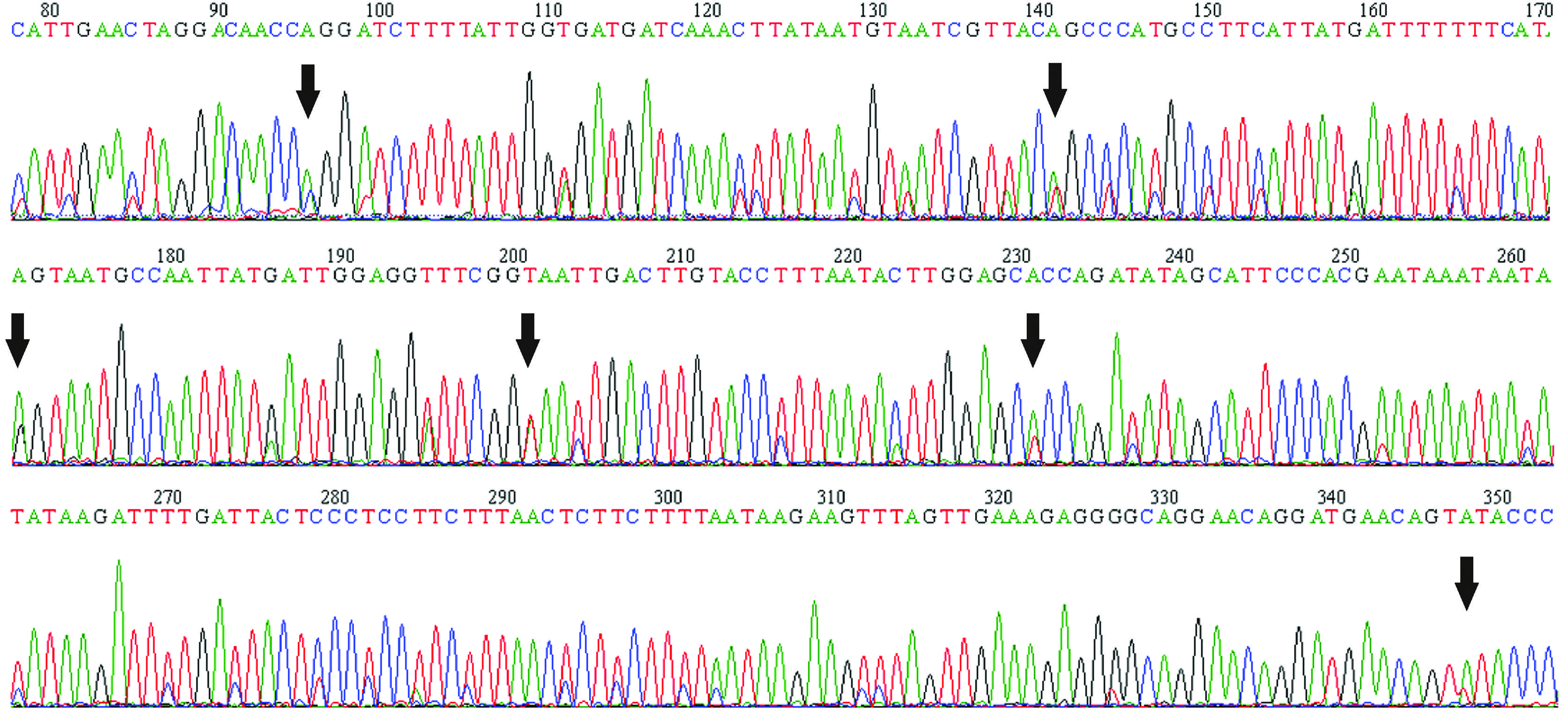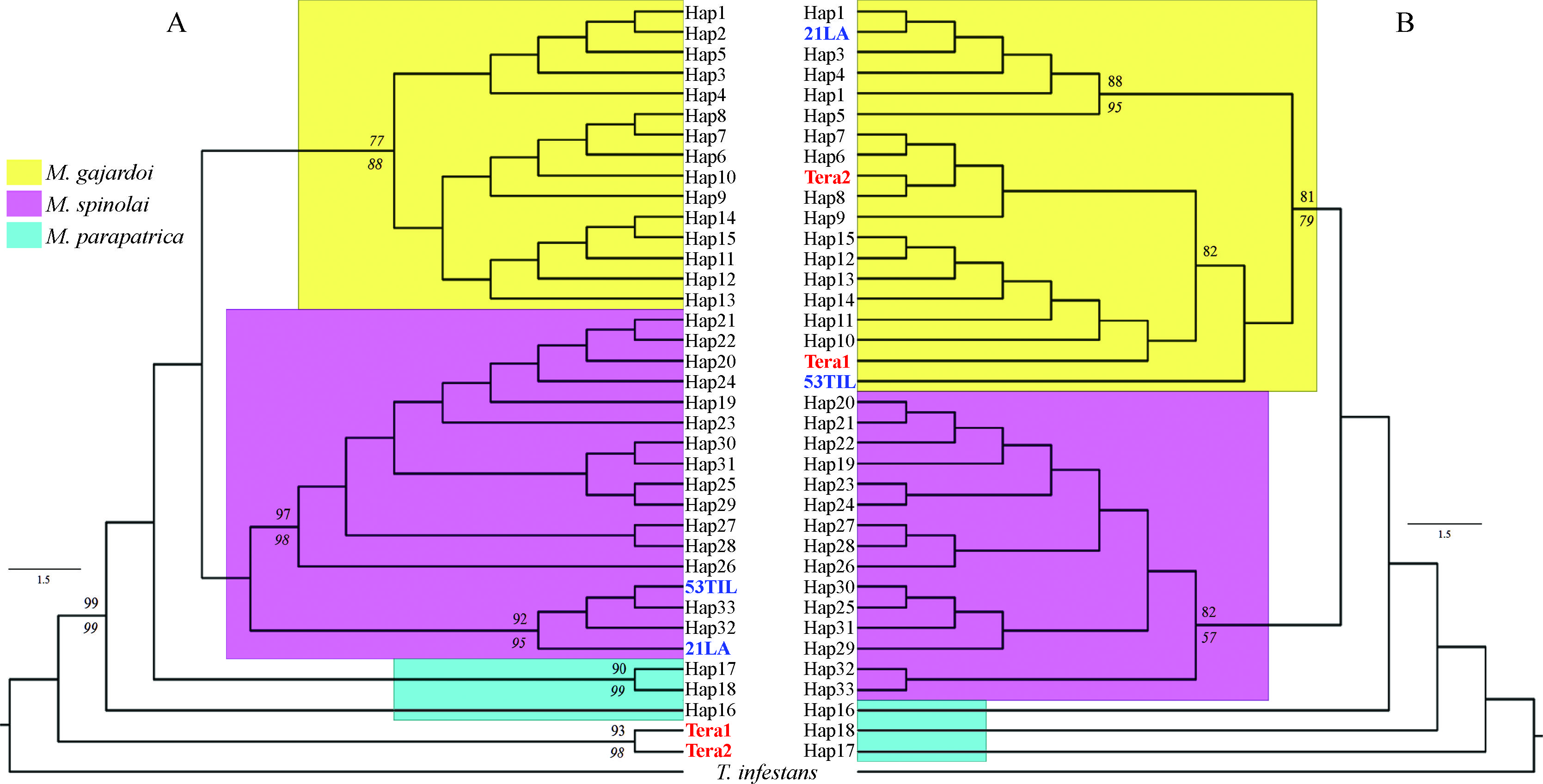Mitochondrial DNA (mtDNA) is widely used to clarify phylogenetic relationships among and within species, and to determine population structure. Due to the linked nature of mtDNA genes it is expected that different genes will show similar results. Phylogenetic incongruence using mtDNA genes may result from processes such as heteroplasmy, nuclear integration of mitochondrial genes, polymerase errors, contamination, and recombination. In this study we used sequences from two mitochondrial genes (cytochrome b and cytochrome oxidase subunit I) from the wild vectors of Chagas disease, Triatoma eratyrusiformis and Mepraia species to test for topological congruence. The results showed some cases of phylogenetic incongruence due to misplacement of four haplotypes of four individuals. We discuss the possible causes of such incongruence and suggest that the explanation is an intra-individual variation likely due to heteroplasmy. This phenomenon is an independent evidence of common ancestry between these taxa.
heteroplasmy; sylvatic vectors; Chagas disease; gajardoi; spinolai; cytochrome


